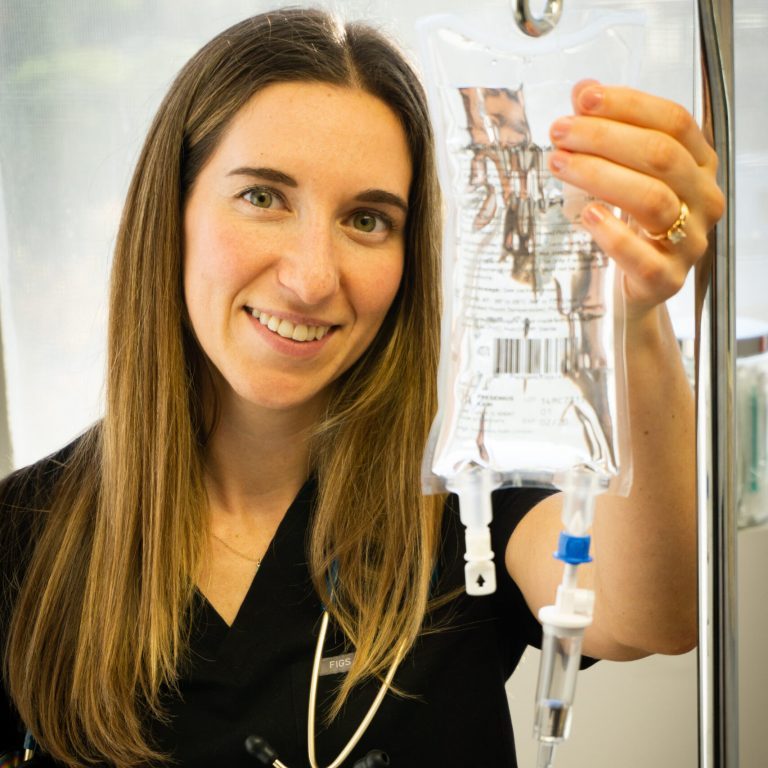Infusion Therapy
Conveniently located to serve the areas of Los Angeles, Woodland Hills, Agoura Hills, Northridge, Van Nuys, Sherman Oaks, Thousand Oaks, Tarzana, Encino, Chatsworth, Calabasas, Bell Canyon and Westlake Village.

Intravenous and injectable medications have made remission a possibility for a variety of rheumatologic diseases. The infusion time and frequency varies, depending on the medication:
- Actemra
- Benlysta
- Boniva
- Orencia
- Prolia
- Remicade biosimilars (Avsola, Inflectra, Renflexis)
- Krystexxa
- Reclast
- Remicade
- Simponi Aria
- Rituxan
- IVIG
- Saphnelo
- Cyclophosphamide
Infusion After Care
Some people receiving an IV medication may have a reaction to the infusion (when the medicine is injected into the vein). We give you medications (Tylenol and an antihistamine) to prevent these reactions. These infusion reactions may happen during the infusion or 1-2 hours after the infusion.
Please let us know if you feel dizzy, nauseated, light-headed, itchy or tingly, swollen, short of breath, or have a headache, fever, chills, flu symptoms, muscle or joint pain, pain or tightness in your throat, chest pain, or trouble swallowing during the injection.
Get emergency medical help if you have any of these signs of an allergic reaction: hives; difficulty breathing; swelling of your face, lips, tongue, or throat.
FAQ
When will Comprehensive Rheumatology Center recommend infusion therapy?
Infusion therapy may be recommended for patients with certain autoimmune disorders such as rheumatoid arthritis, psoriatic arthritis, systemic lupus, gout and osteoporosis and whose condition is severe. Intravenous medication often can provide relief to those who have been unresponsive to or cannot tolerate oral medications.
How is infusion therapy performed?
A small catheter is placed in a vein in your arm. The IV medication is then administered through this catheter over time, usually 30 – 120 minutes depending on the medication. During the infusion, you will be monitored to make sure that everything goes smoothly and that you won’t have any problems.
Is infusion therapy effective?
A medication that is infused instead of ingested orally bypasses the stomach and gets directly into the blood stream. Because of this infusion therapy can be more effective than oral therapy.
Are there any risks to infusion therapy?
While infusions are relatively safe, some risks can be associated with them that you should be aware of:
-Phlebitis- is inflammation of the vein where the IV is placed. Common symptoms are pain, redness, swelling, and warmth in the area. To prevent this, the smallest possible needle is used to administer the IV.
-Infiltration- this happens if the fluid or medication gets in the tissue instead of the vein. You will notice swelling of the tissue around the IV and the skin may get firm, red and tender. To treat, the needle is removed and a warm compress is applied to the area.
-Hematoma- happens when there is a leakage of the blood from the vein into the surrounding tissue. It is treated with direct pressure and usually resolved after a few days.
-Air embolism- occurs as a result of a large volume of air entering the vein through the IV. Air embolisms are easily prevented by ensuring that all the air bubbles are out of the IV tubing before starting the IV.
-Infection- since the skin is penetrated by a needle, there is a risk of infection either of the skin or the IV. Symptoms can include pain, swelling and/or fever. To prevent infections, the site of injection is cleaned properly and all equipment contacting the area are kept sterile.
-Risks associated with the infused medication- see information specific to each medication for description of potential risks.






